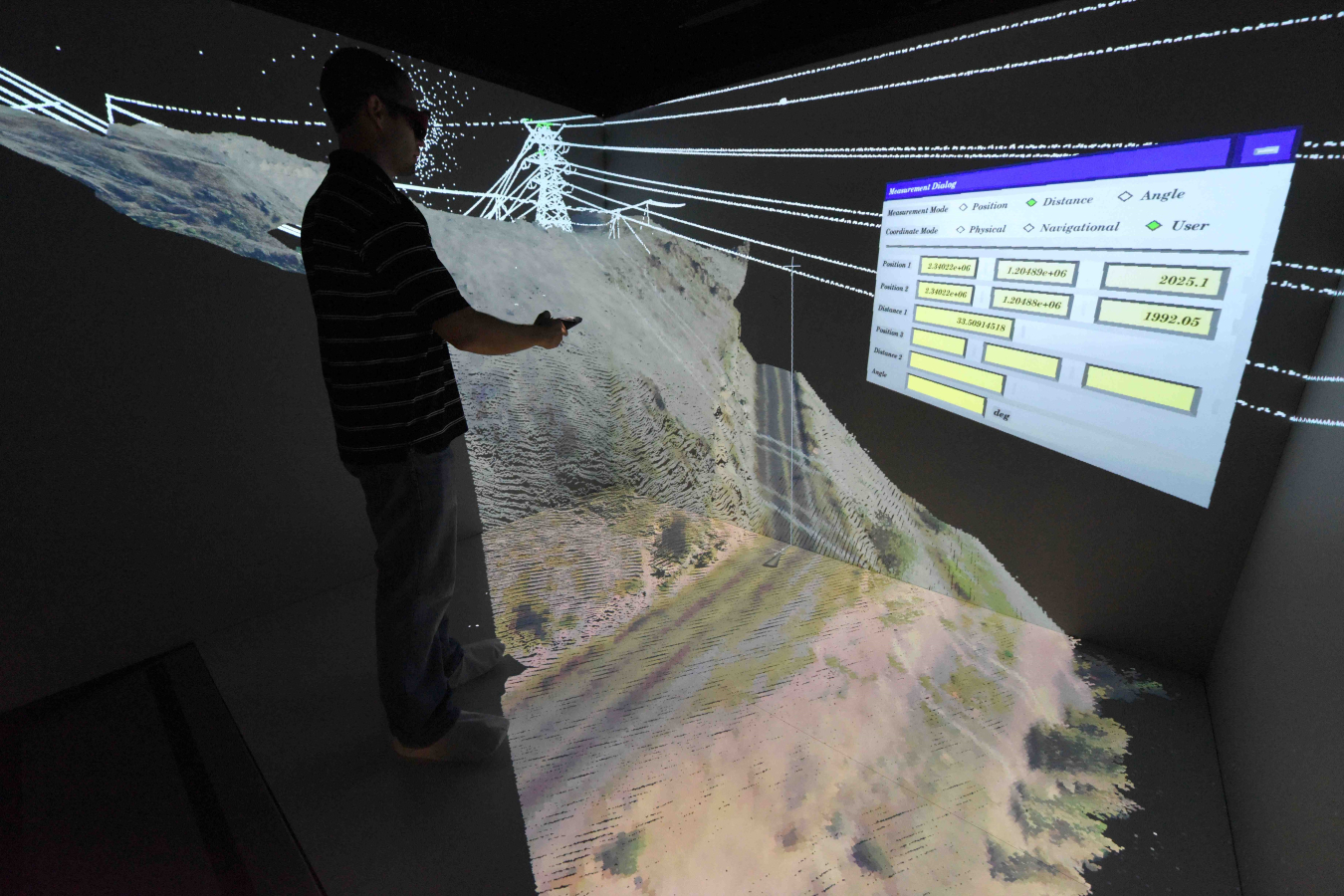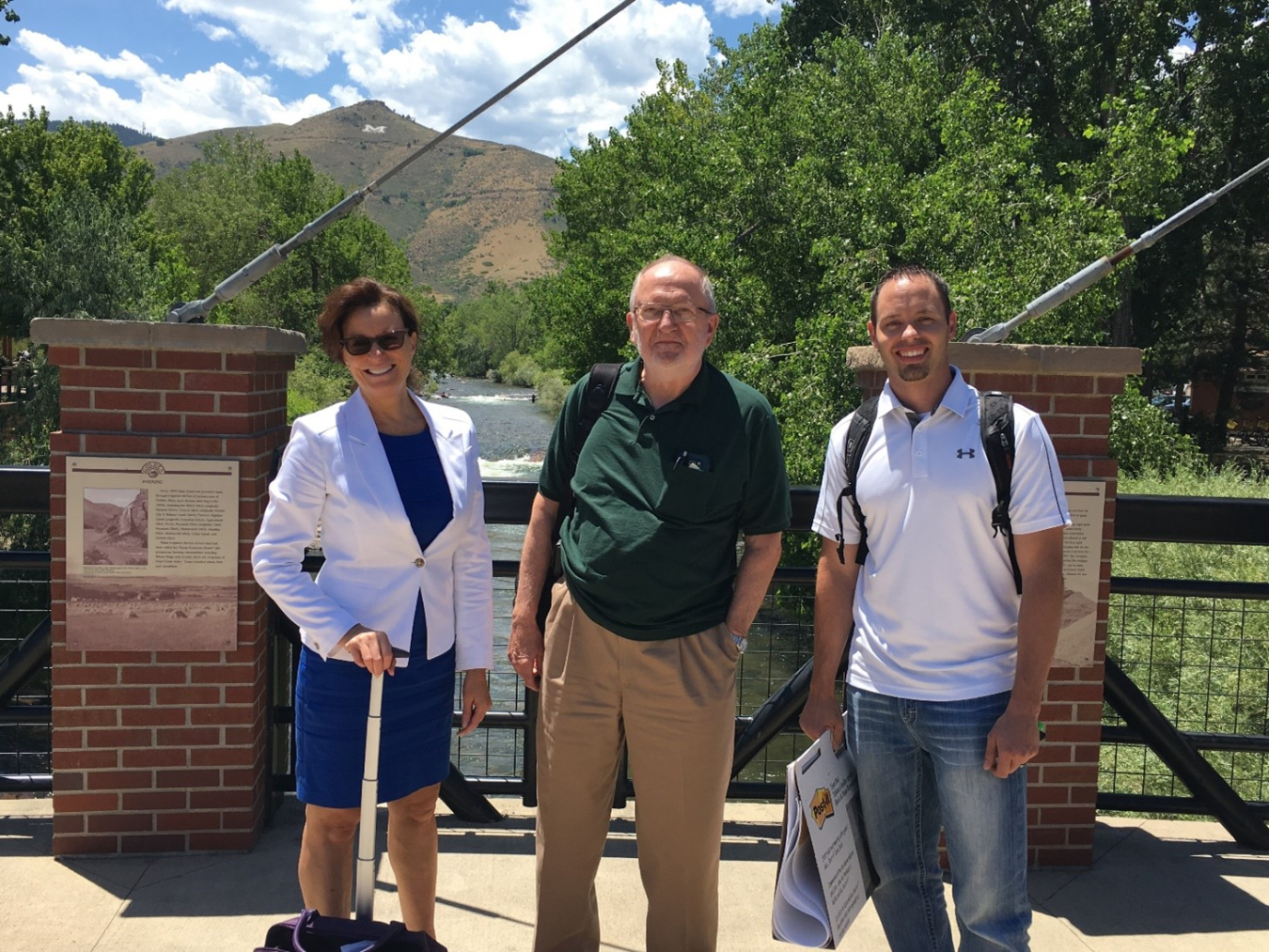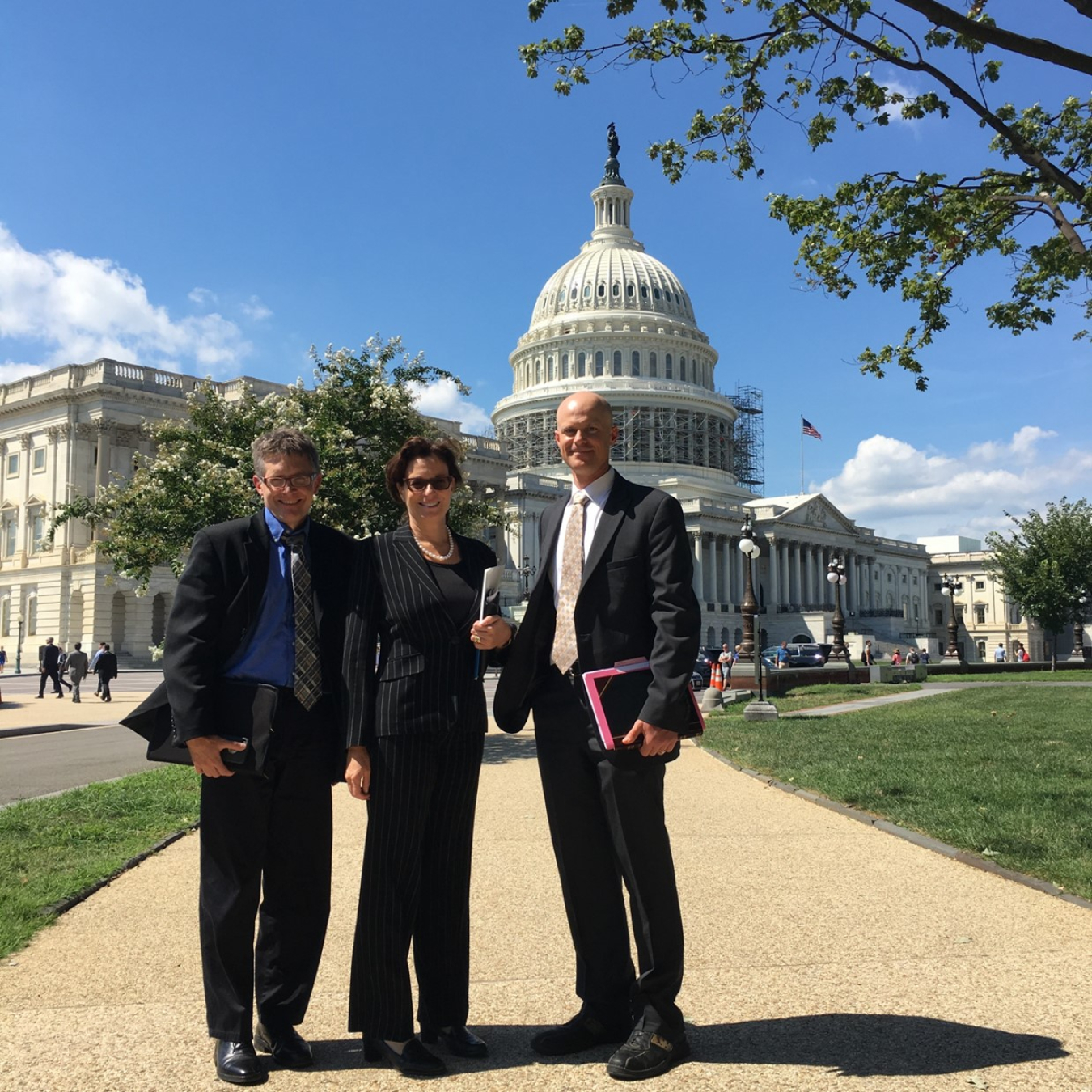Jake Gentle and the team at Idaho National Laboratory (INL) developed a software technology called General Line Ampacity State Solver (GLASS) over the last decade to enable greater utilization across existing power transmission infrastructure.
Office of Technology Transitions
September 5, 2023An Energy I-Corps and Technology Commercialization Fund Success Story
Introduction
Jake Gentle and the team at Idaho National Laboratory (INL) developed a software technology called General Line Ampacity State Solver (GLASS) over the last decade to enable greater utilization across existing power transmission infrastructure. In the United States, an estimated 5% of electricity generated annually is lost in transmission and distribution. Ratepayers then accumulate billions of dollars a year in unnecessary generation costs when transmission lines are saturated near their maximum capacity. GLASS takes in live weather data to calculate more accurate transmission line limits, so utilities can enable additional capacity while also reducing operating costs, creating a more efficient grid.
In 2016, funded by DOE’s Wind Energy Technologies Office (WETO), Jake Gentle and Donna Rennemo participated in the Office of Technology Transitions’ Energy I-Corps program. Through Energy I-Corps, the team realized the power of combining GLASS with existing software technology from Donna’s then-employer, WindSim Americas Inc, daughter company of WindSim AS. To make this a reality, the team leveraged their 2017 Technology Commercialization Fund award from DOE’s WETO to integrate the two software solutions. A new company called WindSim Power Inc was formed to lead this effort. Today, WindSim Power is focused on de-risking the path to commercialization of the WindSim Power Line Solution.
The Origin of GLASS
The idea of GLASS originated nearly fifteen years ago when Jake Gentle was an Idaho State University graduate student working with his professor on solutions for better utilizing existing transmission lines. He joined INL in 2010 and worked with another intern to develop software that could translate weather conditions across complex terrains as live inputs into a capacity model.
Grid operators have traditionally relied on Static Line Ratings, which are based on a fixed set of conservative environmental conditions, to establish limits on the amount of electrical current a transmission line can carry without overheating. GLASS uses a different approach called Dynamic Line Rating (DLR) that can take in live weather data to continuously update its model around power transfer capacity, making the transmission grid “smarter.” Utilities can then better answer questions through dynamic line rating such as how many amps a specific wire could carry without overheating.

Energy I-Corps Develops an Invaluable Industry Partnership
Over the next few years, Jake and his team developed a relationship with WindSim AS, a Norwegian company that sells computational fluid dynamics software. Initially, the team was a WindSim customer, using their product to continue developing interfaces to GLASS. In 2016, Jake decided to team up with Donna Rennemo, CEO of WindSim Americas Inc., to go through DOE’s Energy I-Corps program. Donna describes the market opportunity, “If you look at the industry and the type of technologies that have been around for 20 years or so, you saw a lot of sensor-based technologies clamping on the line. The WindSim Power Line solution is a non-contact, advanced transmission line monitoring system to increase resiliency and reliability, reduce grid congestion, and provide real-time data that could aid in more renewable energy resources. The overall objective is to minimize the amount of hardware that is used while still providing the industry with the trusted and reliable intelligence and the awareness they’re looking for.”
Jake reflects on how the team’s participation in Energy I-Corps pushed forward the commercialization of GLASS, “What we really got out of Energy I-Corps was an understanding of market size, what the market might accept, and what the solution package could look like. After those two months, we started to realize the potential of putting GLASS and WindSim’s software together.”

TCF Funding Enables the Creation of a New Company
As commercialization efforts of GLASS continued, Jake and Donna, along with the WindSim team as an industry partner, were successfully awarded TCF funding in 2017 from WETO. Jake reflected on what his team was able to do with this funding, “When we went through Energy I-Corps, the solution wasn’t seamlessly integrated, so we needed the TCF award to combine these technologies and increase the Technology Readiness Level of the solution. We understood the technology wasn’t mature enough for industry adoption. The TCF award enabled us to overcome this barrier.” After finishing TCF, the team decided to form a new company called WindSim Power with a focus on achieving industry adoption of the technology solution now called WindSim Power Line.

Milestones Achieved & Looking Forward
WindSim Power has been busy the last few years, proving their technology with a series of partners such as New York Power Authority, Idaho Power Company, Altalink and Avangrid NYSEG & RG&E. In the last two years, WindSim Power has continued to stay involved with DOE projects. They recently assisted INL in incorporating WindSim Power’s technology into the North American Energy Resilience Model, a tool for the federal government to evaluate the energy infrastructure and respond to catastrophic events like natural disasters or cyber-attacks.
WindSim Power is wrapping up a 3-year engagement with New York Power Authority, bringing their technology to a Technology Readiness Level of 9 and positioning them to take on bigger contracts. Donna is encouraged by increased Federal Energy Regulatory Commission (FERC) activity in the past few years focused on dynamic line rating and other grid enhancing technologies. Donna explains, “We’ve recently been awarded a 36-month engagement with Avangrid. Every US transmission owner is looking for the best approach to implement FERC Order 881 by July 2025. WindSim Power, GridBright, and Avangrid are partnering to implement WindSim Power's system to increase resiliency and reliability, reduce grid congestion, and provide real-time data that could aid in more renewable energy resources into the New York State electrical grid and validate it as an option for FERC Order 881 compliance.”
Donna also points to more supportive legislative policy providing incentives for transmission owners to implement, “There are currently seven bills that have been introduced in Congress that include grid enhancing technologies. In the U.S., grid owners have a Return on Equity business model, so they have very little incentive otherwise to adopt low-cost, yet high impact tools like ours. If passed, these policies will be a game changer for us because they will better align incentives and push asset owners to adopt these solutions.”
Jake believes that the DOE investment into DLR R&D has helped shape the global understanding and acceptance of various Dynamic Line Rating technologies and implementation considerations. However, he acknowledges that as the market is maturing, new innovations and research will be needed: "We anticipate the federal investment in dynamic line rating research to shift gears, especially as industry now focuses on creating streamlined implementations!"
The Office of Technology Transitions (OTT) oversees the expenditure of the U.S. Department of Energy technology transfer funds through implementing the Technology Commercialization Fund (TCF) across the Base Annual Appropriations TCF and the Bipartisan Infrastructure Law TCF. The Base Annual Appropriations TCF is the base program created by the Energy Policy Act of 2005, which provides an estimated $35 million annually to support the commercialization of National Lab technologies and build out the National Lab commercialization ecosystem. The Bipartisan Infrastructure Law (BIL) provided more than $62 billion to DOE for Research, Development, Demonstration, & Commercial Application. To learn more, visit Technology Commercialization Fund | Department of Energy.
Energy I-Corps is a key initiative of OTT, which sends teams of researchers and industry mentors through an immersive two-month training where the researchers define technology value propositions, conduct stakeholder discovery interviews, and develop viable market pathways for their technologies. To learn more, visit /technologytransitions/energy-i-corps.
To learn more about WindSim Power, please visit WindSim Power | Empower the Grid with Dynamic Line Ratings.

